#the capital of South Korea
Explore tagged Tumblr posts
Text
What are the historical neighborhoods in Seoul?
historical neighborhoods in Seoul
Seoul, the capital of South Korea, has many historically famous neighborhoods. Among them, we introduce six neighborhoods with historical significance.1.Bukchon Hanok Village : An area with a high concentration of Hanok located between Gyeongbokgung Palace and Changdeokgung Palace, it was the residence of noblemen during the Joseon Dynasty. Traditional Hanok and modern architecture are in…
0 notes
Text

People power ✊
#People power ✊#people power#161#1312#class war#south korea#korean#north korea#korea#human rights#military#anti military#fuck the military#military industrial complex#ausgov#politas#auspol#tasgov#taspol#australia#fuck neoliberals#neoliberal capitalism#anthony albanese#albanese government#antinazi#antizionist#eat the rich#eat the fucking rich#anti imperialism#anti colonialism
666 notes
·
View notes
Photo


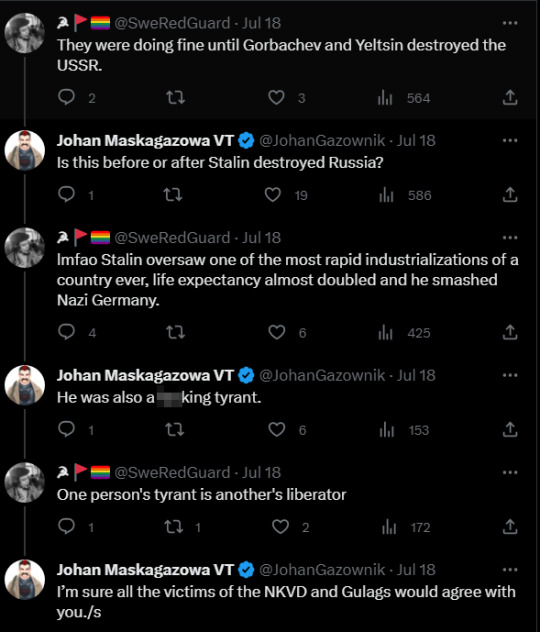

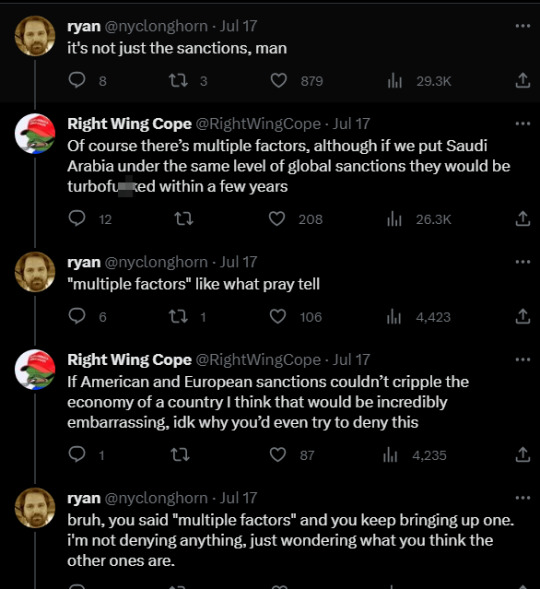




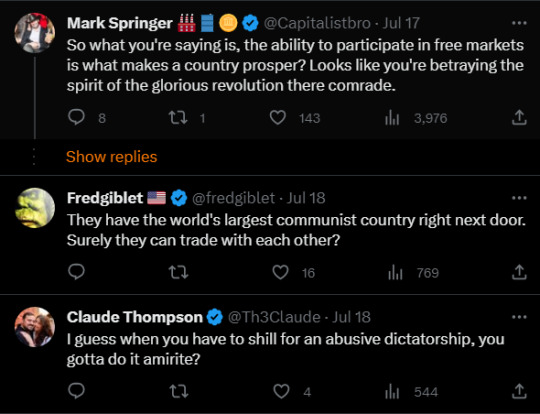
573 notes
·
View notes
Text
Squid Game Season Two Analysis: Capitalist Ideology, The Illusion of Democracy, and The Necessity for Revolution
Why the second season of Squid Game is a great follow-up to the first season and offers us an even more radical critique of capitalism and its supposedly "free" and "democratic" institutions.
(Spoiler warning for both seasons. I won't go into too much detail, but some spoilers for the bigger plot points will be present)
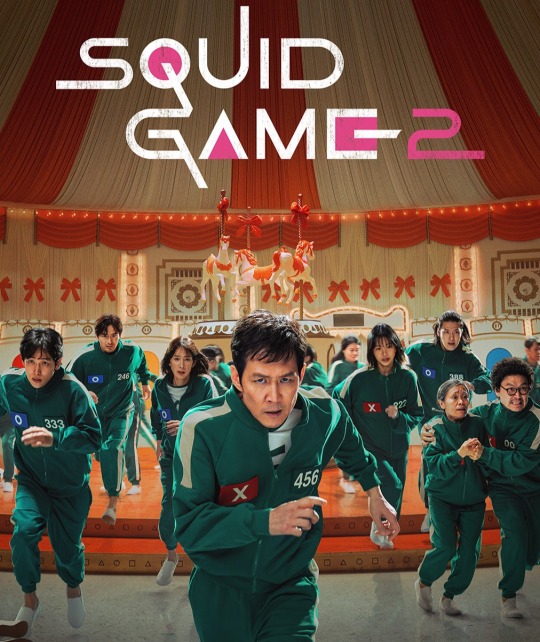
I really enjoyed the second season of Squid Game, so I was surprised when I learned that a good amount of fans of the first season did not feel the same.
Because of that, I wanna give my thoughts on the themes and messages that this season in particular offers us and why I believe season 2 is, in many ways, even more radical than season 1 in its narrative choices.
Season One: The Dehumanizing Nature of Capitalism
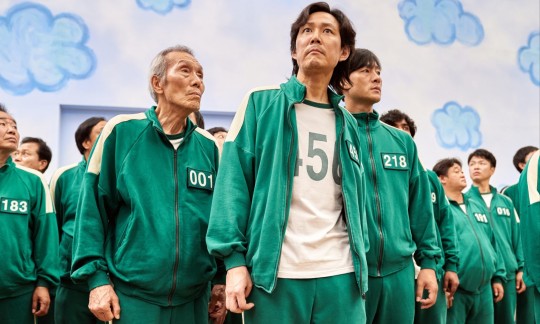
Season 1 did a great job as a more general critique of capitalism (with some elements that are more specific to South Korea). It showed us a story of impoverished people that are so desparate that they find themselves trapped in a literal game of life and death that forces them to not only compete with other participants who are in similar financial situations, but to sometimes even betray and kill them just to survive and possibly win the big money at the end of all rounds.
To make it all even more cruel: It is soon revealed that the whole game just exists for the entertainment of rich elites who change the conditions of the game as they please when they are bored.
Needless to say: The game in Squid Game is a pretty heavy-handed allegory for the predatory nature of capitalism and how it literally kills us. The creator himself has stated this multiple times, since there are still people who (willingly or unwillingly) deny this.
There are already plenty of great analyses of these aspects in season 1 (I really recommend the video on YouTube called "Squid Game: Ideology and The New Soviet Man" by Kay and Skittles), so let's move on to season 2.
Season Two: The Setup

Our protagonist is once again Gi-hun, the only survivor of all games from season 1. He is practically a billionaire since he won all the money in season 1, and could therefore live a pretty comfortable life.
And yet he is fixated on one singular goal: To track down the location where the games take place to put a stop to them once and for all. Gi-hun feels guilty to spend his fortune on anything else than this one goal, since it's a fortune that came from the deaths of his friends and countless other people.
Gi-hun eventually finds himself back in the game after every other approach failed. Unfortunately for him, the tracker that he surgically implanted in his tooth got removed while he was knocked out and transported into the game. He is once again forced to participate in the game, since his rescue team that was supposed to save him and attack the island on which the games take place cannot locate him as of now.
The Greatness of Gi-hun: Resisting Hyperindividualism, Cynicism and Capitalist Ideas of Worth

I really like Gi-hun as a character. He started out as a deadbeat dad who got into severe debt because of his gambling addiction. Gi-hun is someone who many people that are entrenched in neoliberal capitalist ideology wouldn't feel much sympathy for at first, as he's shown to be pretty reckless and just overall far from a noble hero when we first get introduced to his character in season 1.
If you're from the west (or a country like South Korea which has a similar hyperindividualist capitalist culture), then you are taught to see Gi-hun's situation as something self-caused, as something he freely chose to be in with his own bad decisions. Furthermore, you're taught to see his socio-economic situation as a direct reflection of his value as a person.
In the series itself, the Front Man, the VIPs and even some other players in the game reinforce this way of thinking. They constantly express the sentiment that the players in the game are "worthless", "scum" and "trash" that deserves to be "filtered out" (killed) because they are responsible for the situation that they are in and have no worth anyway, as their socio-economic status shows according to this logic.
Gi-hun is someone who rejects all of this.
In season 2, we see him more determined than ever to save as many people as possible in the game, and to ultimately put an end to the game itself. He does not believe in the narrative that people's worth is determined by their socio-economic status, nor that they are completely self-responsible for their situation and therefore deserve to be killed in the game.
Gi-hun calls the game out for what it is: A predatory and cruel tool of rich capitalists that preys on people's fears and vulnerabilities to encourage the worst aspects of people's personalities to flourish, all just for the entertainment of rich investors who see the players as expendable and enjoy watching them die and betray each other.
Gi-hun isn't particularly gifted or talented, he's not the exceptional, flawless individual that neoliberalism fetishizes. He can be cowardly, insecure, frightened and even selfish, as we saw in season 1 when he lied to the old man to save his own life.
But at the end of the day, he is someone with an unwavering belief in the worth and potential of people despite what his hypercapitalist neoliberal culture (and people deeply embedded into it) constantly tells him. He's someone who, despite all his flaws, risks his life and happiness for that simple belief.
Gi-hun is the antidote to a deeply cynical, hyperindividualistic and neoliberal capitalist society that conditions us to not believe in the worth and potential of other people beyond their wealth and social status.
The Illusion of Democracy: A deceptive Facade of Free Choice and Equality

Let's look at the game itself this season, since there have been a few changes to its rules.
In this season, the surviving players are given the opportunity to vote after each round to either continue into the next round or to stop playing and divide the money that has accumulated so far among each player that survived. The more players die, the more money gets added to the final prize and the fewer people need to share the total sum with each other, meaning each player gets more money in the end if the majority votes to stop playing.
The staff of the game keeps emphasizing how the players chose to be part of the game, how they always have the option to leave, how the game respects free choice and values democracy, how everyone is equal in the game, and how the rules are fair and universal.
Unsurprisingly, this is all nonsense.
The players are not even aware that they are playing with their lives at risk until after the first game, a game called "Red Light, Green Light", which has a high fatality rate because once the first player dies, the shock and sudden rush of fear causes people to panic, leading to more deaths.
The first season also showed us that the VIPs can change the rules and conditions of the game whenever they feel like it, even during a round.
Age, health, knowledge and experience with the particular games that are being played in each round can also make the difference between life and death. Sometimes the games also straight up involve a factor of luck that the players have no real control over.
Then there's also the fact that not every player is in the same situation. Some players, such as Hyun-ju or Yong-sik, are shown to have severely more debt than others and lost significantly more in their life, which means some have the privilege to be all set again after just one or two rounds (if the majority votes to stop playing) while others will have barely earned enough money to fix their life, and would therefore need to play more rounds to achieve that outcome.
Some also have family and friends that need them, while others lost everything and have no one to come home to. All these factors make them unequal and shape the way they vote.
So basically: The players are stuck in a game that they didn't even know puts their life in danger until after they played the first round. The only reason they entered in the first place was because of their precarious situation that varies in severity from person to person (which means some have the privilege to vote to end the game early with their financial issues fixed, while others do not). Some players have more advantages than others in each round because of age, health, knowledge, experience or even just sheer luck. And the VIPs can just change the rules of the game whenever they feel like it.
Squid Game tells us very clearly that it thinks very little of the rhetoric of "free choice" "free democracy" and "equality" in a structurally coercive, brutal and predatory system with fundamentally unequal conditions such as our capitalist society.
The Front Man: Cynicism, Vote Manipulation and Counter-Revolution

A key aspect of the second season of Squid Game is that the Front Man himself pretends to be a regular player; he participates in the games among Gi-hun and the rest as player 001. The Front Man deliberately gets close to Gi-hun and even manages to win his trust pretty easily with his down-to-earth and kind facade, making him involved in Gi-hun's every move.
The Front Man is, in many ways, the opposite of Gi-hun.
He is shown in both seasons to think very little of the players and humanity as a whole. He sees the participants of the game as worthless trash that deserves to get sorted out. The Front Man believes humanity is selfish, greedy and cannot be better than what it is right now, which makes the game a necessary part of the world to him.
The Front Man is thoroughly entrenched in the cynical, neoliberal capitalist worldview that sees humans as fundamentally selfish and greedy beings that only have themselves to blame for their situations.
It is noteworthy that the Front Man is very fixated on Gi-hun, and even seems to grow a liking to him because of his unwavering belief in the value and potential of people that he upholds despite all the horrors and betrayal that he witnessed. This suggests that a small part of the Front Man might still have hope that Gi-hun is right and wants him to succeed in his goal.
But at the end of the day, we see that his cynical and neoliberal view on humanity rules over what little hope in a better world he might have.
As such, the Front Man ultimately sabotages Gi-hun's efforts whenever he can. When the vote was tied after the first round, he votes to continue into the next round so that more people die, something Gi-hun fought to prevent by making it clear to the other players that more people will die if they continue.
But this is not the only time he manipulates Gi-hun's efforts: When Gi-hun organizes an armed resistance to finally put an end to the game itself for good, the Front Man betrays him in the last minute by kiling members of the resistance group and then shooting Gi-hun's best friend in front of him in order to emotionally break Gi-hun and make him lose hope.
The Front Man is not just a despicable antagonist, he also serves as a pretty blunt example of a member of the ruling class that rigs elections and destroys revolutionary movements from within, a strategy that imperialist powers such as the US have utilized many times in history already.
When Voting isn't enough: The Necessity of Revolution and Class War
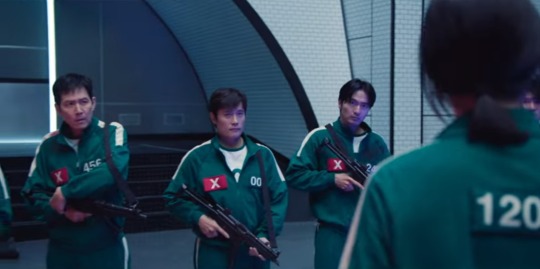
Despite Gi-hun's attempt to end the game for good having failed (at least for now), I don't believe the message of Squid Game's second season is one of resignation. Not only is the game shown to be fundamentally unjust and rigged, but voting alone is also portrayed to not be enough.
Throughout the whole season, those who vote to end the game never succeed. This is not a coincidence. The game is designed to make it the less likely outcome not just because of the involvement of Front Man, but because the game preys on people's despair and precarity, all while also encouraging selfish, greedy and reckless behavior in its very design.
But even if enough people voted to end the game: The next batch of players would just be thrown into the same situation Gi-hun and the others just escaped from. A successful majority vote to leave the game would save many lives, but Gi-hun's fight would be far from over. His goal to put a permanent end to the game would not be achieved yet.
The staff of the game also makes a deliberate choice to put a big X or O onto the jumpsuit of each player depending on how they voted. This encourages players to define themselves as either Xs or Os, which leads to hostility towards the players of the other fraction.
This reaches a point where players of both fractions plan to murder the other fraction in order to secure the next vote for themselves.
But Gi-hun puts a stop to that.
He realizes it's a deliberate distraction so that people fight each other rather than the game itself. He proposes that the players should instead organize together to fight the real oppressors that forced them into the whole situation in the first place.
They are not Xs or Os. They are impoverished and desparate people who were manipulated to participate into a literal game of death that requires suffering, betrayal and murder for victory.
The message of Squid Game Season Two is one of collective resistance and revolution:
The institutions of a fundamentally rigged and predatory class system are not enough to abolish the system itself. Voting can be used as a form of damage control, but it cannot replace collective action and organizing.
Instead of fighting each other, we need to organize together to fight the system itself. It is the only way we can truly all be liberated from the death game of capitalism.
#squid game#squid game season 2#philosophy#socialism#communism#capitalism#gi hun#in ho#front man#hyun ju#politics#sociology#south korea#anti capitalism#squid game review#squid game analysis#netflix
33 notes
·
View notes
Text
youtube
A new DPRK News Room documentary after many years! Just as good as their others. I recommend giving it a watch to learn about the ongoing US military occupation of South Korea and the collaboration of the ROK government.
#communism#socialism#leftism#anti capitalism#marxism#politics#korean politics#korean history#korea#north korea#south korea#dprk
38 notes
·
View notes
Text

Korean unions say no to U.S. war buildup, demand Yoon’s resignation
By Korean American Support Committee for KCTU
On Nov. 2, the Korean Confederation of Trade Unions (KCTU) will host the National Workers’ Rally to carry on the spirit of martyr Jeon Tae-il, a dedicated South Korean sewing worker and labor rights activist who tragically took his life at just 22, a protest against deplorable working conditions in South Korea’s factories. This year, the rally will focus on the call for President Yoon Suk-yeol’s resignation.
#KCTU#protest#South Korea#antiwar#labor#class struggle#Yoon Suk Yeol#capitalism#imperialism#occupation#Pentagon#DPRK#workers#solidarity#Struggle La Lucha
17 notes
·
View notes
Text

holy fucking shit, this might be a new low
#anti capitalism#communism#late stage capitalism#socialism#anti liberalism#antifascist#south korea#west germany#north korea#east germany
13 notes
·
View notes
Text
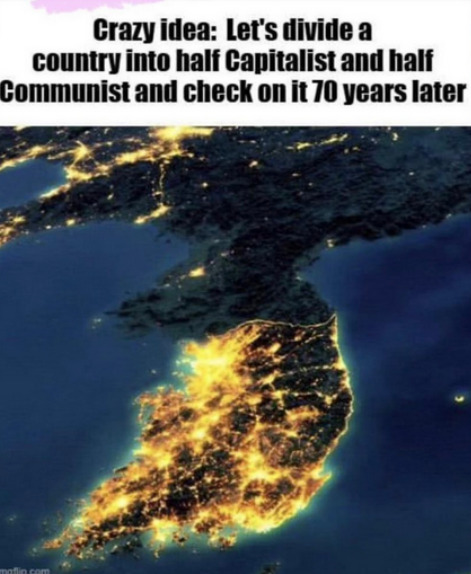
#meme#memes#shitpost#shitposting#or post war germany with the Berlin wall#humor#dark humor#funny memes#funny humor#funny#north korea#south korea#communism#anti communism#capitalism#satire#irony
116 notes
·
View notes
Text
[Exclusive] “Deep Impact on Korean Women’s Movement… ‘Deepfake Scandal’ Naturally Leads to Global Solidarity”
published sept 18th 2024
this article has been mtl and edited from the original Korean into english. it’s not going to be 1:1 but the basic facts should be there. If you happen to notice any discrepancies please lmk and I’ll edit it asap. Thanks everyone for your help and continued patience. I thought it was interesting to hear from the Chinese feminists who organized the protest in London and learn how they think about the deepfake issue so I decided to post this here.
Chinese Women’s Exclusive Interview after Organizing UK Protest against ‘Korean Deepfake Porn Scandal’
“It broke my heart when I saw two Korean high school girls translating the ‘Deepfake Porn Scandal’ into Chinese online to seek help. It was clear that, just as the Chinese government ignores us, the Korean government was doing the same to them, which made me feel even sadder.”
Nana, a Chinese feminist who organized a protest in London condemning the Telegram deepfake porn crimes in Korea, described her initial emotions upon hearing about the recent deepfake incident in Korea. The sadness she felt was not only from empathizing with the suffering of the many female victims. It also stemmed from a deep sense of sympathy and shared struggle with the women living under state and societal systems that remained indifferent to their pain.
Feeling an instinctive urge to “do something,” Nana quickly organized a protest march from London’s Trafalgar Square to the Korean Embassy. What she initially expected to be a small gathering of just a few Korean activists exceeded her expectations. Within just a few days, more than 100 women from various countries, including Korea, China, and Japan, took to the streets on the evening of September 3 (local time). The protest also drew significant attention on social media, becoming the first overseas demonstration following the incident.
Around ten days after the protest, Segye Ilbo was able to meet three Chinese women in the UK who organized and led the event. Given the risks that Chinese protesters face, both at home and abroad, the women requested to use pseudonyms.

On September 3 (local time), women from various nationalities gathered in London to protest against the recent illegal deepfake porn crimes in South Korea. The protest was a call for justice regarding the widespread deepfake sexual exploitation incident.
Protest in the UK Against the Korean Deepfake Scandal
In an interview at a café in central London on September 12, Nana, Axolotl, and Mochi revealed that they have been involved in women’s rights activism since 2022 through their Instagram account, “We Are All Chained Women (@weareallchainedwomen).” While women had always participated in protests, they noticed that men often took credit for their contributions. This inspired them to create an account to document women’s activism firsthand. Their pre-existing community of women living abroad became the foundation for their collective efforts. Despite having no prior experience in organizing protests, they learned the ropes by directly engaging in street activism, including how to organize marches and the symbolic importance of protesting in front of embassies.
Over the years, they have organized around 20 protests, addressing issues like sexual assault in India, women’s rights in Palestine, and human rights for women in Afghanistan. However, the protest in early September against the Korean deepfake scandal felt particularly special to them. Typically, they communicated only in Chinese, but this protest plan was quickly translated into English and spread to women from various countries, resulting in an unprecedented level of diversity and participation.
Nana said, “I wanted to protest alongside Korean feminists, but I hadn’t had the chance to connect with any in real life. It was so meaningful to finally meet Korean women through the spread of this protest.” Following advice from many Korean women on how to prepare for the protest, they stayed up late, making banners just three days before the event. They also learned the importance of having legal observers and safety personnel.
Axolotl emphasized the significance of this protest, saying, “Unlike previous, more relaxed gatherings, this was a truly official protest organized as a formal entity. It was also the first time we met women of various nationalities on the streets, not just Koreans.”
Recalling the day of the protest, Mochi said, “It was my first time going to the Korean embassy, and we got a bit lost, so there were some bumps along the way. Despite our inexperience, thanks to the courage and solidarity of women from various countries who chanted slogans in Korean and English, we successfully completed the protest.” In London, slogans such as “My life is not your porn” and “Deepfake is murder” echoed throughout the protest.
When asked about the reaction of the Korean embassy, Mochi explained, “Two men were watching us from behind the curtains, filming the protest, and embassy security guards came out to record what we were saying. If this were the Chinese embassy, they might have responded more discreetly, but the Korean embassy seemed shocked, likely because they hadn’t encountered such protests before. Soon after, they called the police.” However, the police merely asked when the protest would end and then left.
As embassy staff left the building, protesters chanted, “Punish everyone who creates, watches, and trades in illegal deepfake content!” According to Mochi, the embassy representatives quickly retreated back inside.
The Influence of Korean Women's Feminism
"Girls' Generation's 'Into the New World'? Of course, I know it. I also know it’s used at protest sites. I believe every woman in China our age should know this song."
These women all agreed that Korean feminism has already made a significant impact in China. They were well aware of the “Uncomfortable Courage” (2018) protests, which criticized biased investigations into illegal filming crimes in South Korea. They explained that “Into the New World,” sung by Korean women at various protest sites, is not only famous in China but also known and sung by feminists in many other countries.
One movement that particularly caught their attention was South Korea’s “4B Movement.” The term “4B” combines the Chinese character for “no” (非) and the letter “B,” referring to a lifestyle that rejects four traditional roles: sexual relationships, childbirth, dating, and marriage with men. Never before had there been such a collective movement questioning and voluntarily rejecting life tasks that were considered natural for women to follow.
When Nana first heard about the 4B Movement, she was deeply impressed. “While it’s dangerous to openly oppose the government, it’s remarkable how women have found ways to resist on an individual level in their daily lives,” she said. “I think it’s an effective way for individuals to resist being reduced to birth machines by the state.”
She also introduced the “boy sober” trend, which has become popular on the video platform TikTok. The term “sober” refers to being mentally clear, and the trend encourages women to stop relying on men in order to maintain emotional independence. This trend is thought to have been significantly influenced by South Korea’s 4B Movement and events like the U.S. abortion ban ruling.
Nana emphasized the importance of young women experiencing the freedom to enjoy their lives and spaces as individuals, rather than being dependent on men.
Axolotl pointed out that even in Western countries, many women are still "chasing false dreams." She explained that while there is a societal atmosphere that makes people believe gender equality has already been achieved and that women are equal to men, it’s crucial to expose the reality that this is not the case. “We must not be deceived by the small comforts offered by patriarchal systems and governments,” she said, stressing the need to uproot the deep-seated roots of gender inequality.
In this process, Axolotl believes, “We must question the policies and laws of every institution and government.” She explained that encountering immediate backlash when addressing systems of oppression—like patriarchy intertwined with capitalism—demonstrates why this work is necessary. “For a long time, we’ve struggled with political depression, feeling helpless that nothing could change,” she added. “But now, at least, we know we can do something, and through connections, we can draw strength from one another.”
Mochi shared a similar sentiment, reflecting on the meaning of all this activism. “I used to ask myself what the point of all this was, but then I realized that it wasn’t about changing the world immediately. I have to do this for my own mental health,” she said. Finding a way to channel incomprehensible anger and break free from long-standing feelings of helplessness provided her with a personal, practical solution.
She added, “If you focus solely on how much the world has changed, in some ways, it can feel very unrealistic. But when you concentrate on your own emotions and the powerful sense of connection you feel when meeting more like-minded friends, that’s where you find the motivation to keep going.” They said that since they began organizing protests, their group has continued to grow, giving them hope for the future.
Hiding Women’s Rights and Domestic Violence Issues
Nana reflected on the longstanding societal strategy of concealing issues such as women’s rights and domestic violence and trying to stop women from exposing these problems in other languages by accusing them of “disgracing the nation.” She noted, “In this sense, Korean feminists and we are so alike that it feels like looking in a mirror.”
Nana mentioned that when she heard from Korean women that “we do not trust the Korean government or the Korean media,” she realized it was similar to how Chinese women couldn’t find trustworthy media in China. This is why the slogan “Woman is our nationality” was created. She explained, “Regardless of background or country, being women unites us, and it’s the perfect slogan to show solidarity among feminists of various nationalities.” She emphasized that it also carries the message, “We will eventually win.”
They stressed the importance of connection between women from East Asian countries, which share common traits such as Confucianism and patriarchal governments. The women, who were well-versed in the history of digital sex crimes in Korea—from illegal filming to the Telegram Nth Room exploitation and deepfake sexual violence—asserted, “Turning women’s everyday lives into pornography is not just a problem in Korean society.” They expressed anticipation for the large protest related to deepfake crimes set to take place in Seoul on September 21.
The women repeatedly mentioned the courage of Korean feminists and the awakening it sparked among women of various nationalities. Nana asked, “Do Korean women know how much Chinese feminists have been influenced by the 4B movement and literature from Korea?”
She continued, “There are many works of ‘Korean women’s literature’ translated into Chinese. Classics like Kim Jiyoung, Born 1982, The Vegetarian, and Summer Outside. Writers like Kim Ae-ran, Kim Cho-yeop, and Han Kang are famous among Chinese feminists.”
London correspondent: Ji-hye Jeong
#South korea#china#korean feminism#chinese feminism#protest#Deepfake crimes#Deepfake sex crime#anti capitalism#girls generation#Long post#interview
8 notes
·
View notes
Text


This Saturday begins our Culture Circles!! Join us to learn more about different marginalized communities, their customs, their music, their languages, EVERYTHING! And learn how you can support them on their journey to liberation! discord link in bio @bfpnola since tumblr kills links!
—
Other time zones [clock emoji next to each]:
Saturday, Sept. 23rd
⏰ 5 pm MT — Phoenix, Arizona, USA
—
Sunday, Sept. 24th
⏰ 12 am BST — London, United Kingdom
⏰ 4:30 am IST — Mumbai, India
⏰ 8 am JST — Tokyo, Japan
⏰ 9 am AEST — Sydney, Australia
#reaux speaks#resources#bipoc#undescribed#anti capitalism#queer#history#intersectional feminism#tamizh#india#language#linguistics#sami people#norway#norse#south korea#korean#culture#music#art#dance#discord server
32 notes
·
View notes
Text
Boeing after yet again, one of their plane’s landing gear doesn’t deploy upon landing, causing it to slide into a concrete wall and blow nearly 200 fucking people to smithereens: oh no! Our condolences!
Also Boeing: * refuses to update their safety maintenance protocol for the 37th business quarter in a row because it would cost more*
The elite do not care about your safety, only your money and tendency to look away. They’ll cut the corners, and they’ll cut your life too.
#boeing#planes#aviation#boeing lawsuit#whistleblower#negligence#capitalist hell#anti capitalism#anti corporations#aviation disaster#South Korea#plane crash#plane safety#air travel#boeing 737
5 notes
·
View notes
Text
youtube
What is happening in Syria and South Korea? What did Joe Biden do this time? Why am I working on Sundays? All this and more on the Patron edition of Social Justice Alchemy. Come and join us. Bring your questions too.
#youtube#politics#streaming#capitalism#anarchism#mutual aid#socialism#signal boost#fundraising#social justice alchemy#social justice#election day#election 2024#us elections#presidential election#2024 election#american politics#us politics#trump#donald trump#election results#us elections 2024#democrats#joe biden#biden#biden administration#president biden#syria#south korea
2 notes
·
View notes
Text
▶️ Activists held a pro-Palestine demonstration in the South Korean capital Seoul, condemning the ongoing Israeli genocide in Gaza.
#GazaGenocide
#gaza genocide#GazaGenocide#videos#video#seoul#korean#south korea#korea#palestine#gaza#rafah#free palestine#freepalastine🇵🇸#ausgov#politas#auspol#tasgov#taspol#australia#fuck neoliberals#neoliberal capitalism#anthony albanese#albanese government#palestinian genocide#save palestine#i stand with palestine#palestine news#all eyes on palestine#free gaza#gaza strip
353 notes
·
View notes
Note
Tired to see people say "wow, South Korea is so strange. The adults work too much and can barely survive with the money they get and the children are suffering so much stress in schools. The cost of living there is so high!". They talk this like US or England doesn't have these problems. It's capitalism, but racists talk like koreans are weird. US spends millions invading other countries and England literally has a royal family living off colonialism while the population starves.
Idk what to tell you nonny it's frustrating. Also like that's just capitalism??? It's just late stage capitalism???
mod ali
35 notes
·
View notes
Note
Hello Im mohammed Please donate and help share my donation campaign please.I live in northern Gaza ,On 25/2/2024, I went to Al-Nabulsi roundabout to bring humanitarian aid. I was waiting for help, and here I was shocked. I was surprised by an explosive bullet in my left hand, which led to its complete disappearance and the need for a bone transplant. The reason for going to that place was the lack of food and hunger in the family. At that time, my sister was pregnant with her daughter Malak, and my father was not there because he had to travel for treatment and take a dose of chemotherapy. Here, I ask you to participate in donating and participating in my campaign. Thank you.The campaign has been documented.@90-ghoset
🍉🍉🍉🍉🍉🍉🍉🍉
HELLO EVERYONE PLEASE DO PAY ATTENTION !
PLEASE TRY TO DONATE AND HELP THIS FAMILY GET SAFETY !
🔻🔻🔻
🕊🕊🕊
AT THE VERY LEAST CONSIDER A REBLOG TO SPREAD THE WORD!
REMEMBER EVERY LITTLE BIT COUNTS AND ADDS UP MORE!
🫒🫒🫒🫒🫒🫒🫒🫒
#palestine#free palestine#gaza#free gaza#current events#israel#jerusalem#tel aviv#palestinian genocide#israeli#israel is committing genocide#genocide#evacuation#all eyes on rafah#anti zionism#anti facist#anti capitalism#america#britain#france#ireland#south korea#india#indonesia#japan#china#germany#kpop#anime#fandoms
4 notes
·
View notes
